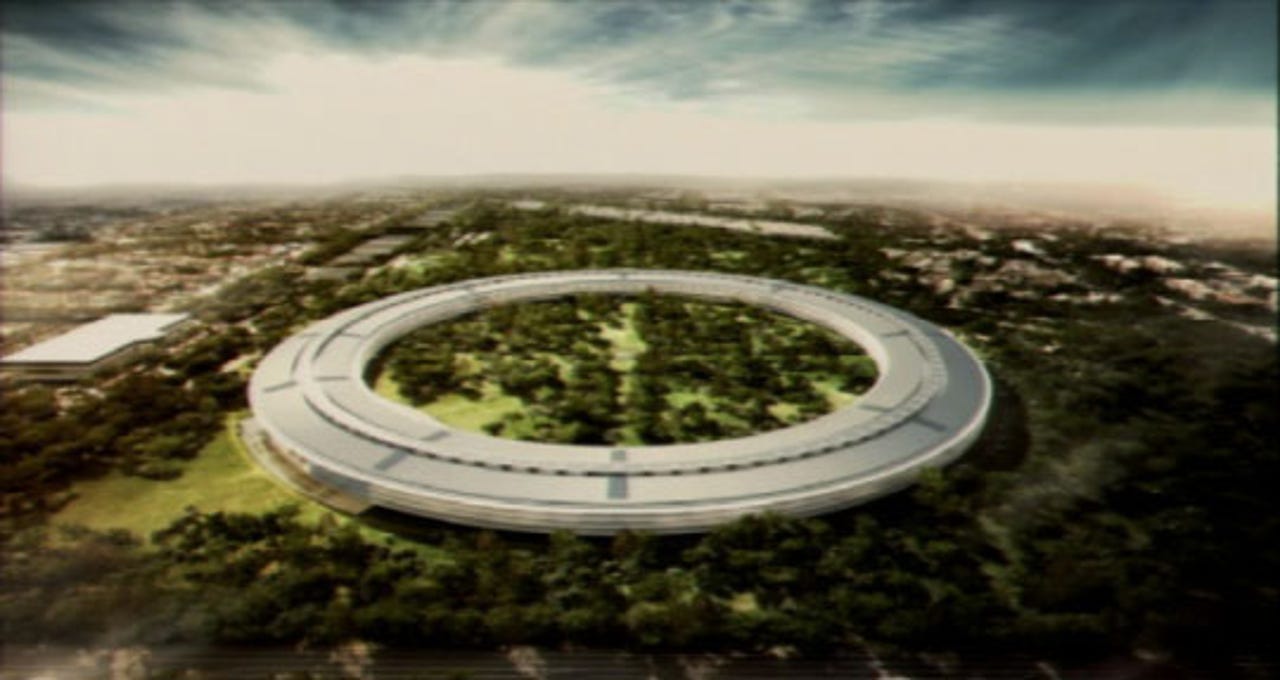Apple's spaceship campus: photos


The new campus would house 12,000 of the company's employees under one roof, as well as take advantage of technologies that the company has picked up by building its retail stores over the years.
(Credit: Apple/City of Cupertino)
Here you can see Apple's existing headquarters on the bottom left, with the new site situated on the top right.
(Credit: Apple/City of Cupertino)
Apple's new campus will house its own energy centre to power the complex. It also splits apart the research and development facilities from the main building.
(Credit: Apple/City of Cupertino)
Like Apple's retail stores, Apple's new campus will have a heavy focus on glass. During his presentation to the city council earlier this week, Apple CEO Steve Jobs said that there won't be a single piece of straight glass in the building.
(Credit: Apple/City of Cupertino)
Jobs referred to the building as looking like a spaceship. Here's what it would look like at the new site.
(Credit: Apple/City of Cupertino)
Apple has said that it plans to increase the landscaping on the property by 350 per cent, as well as increase the number of trees by 60 per cent.
(Credit: Apple/City of Cupertino)
A rendering of the new campus at daybreak.
(Credit: Apple/City of Cupertino)
The pathways around the building are featured in this rendering. Is she rocking out on an iOS device, perhaps?
(Credit: Apple/City of Cupertino)
Renderings of Apple's new building show it tucked away from any nearby roads or intersections. Apple's current campus is right next to both the freeway and De Anza Boulevard.
(Credit: Apple/City of Cupertino)
This rendering gives you an idea of how much land Apple's campus would take up.
(Credit: Office of the Secretary of Defense)
An aerial shot of the Pentagon in Arlington County, Virginia. Cupertino city Mayor Gilbert Wong commented during Wednesday's press conference that Apple's building was a similarly large undertaking.
(Credit: Foster + Partners/URS Group)
An aerial rendering of Foster + Partners/URS Group's concept for a circular National Museum of African American History and Culture. The Smithsonian ended up going with another design, and will break ground on that building next year.
(Credit: Jose Maria Sanchez Garcia Architectural)
The Centro de Tecnificacion Deportiva in western Spain is a large, circular building designed by José María Sánchez García. It, too, is surrounded by trees, although it's focused on training athletes rather than on creating new technology.
(Credit: Google Maps)
The Hirshhorn Museum and Sculpture Garden in Washington, DC features a perfectly round design, much like Apple's plans. It was designed by architect Gordon Bunshaft, with construction beginning in 1969.
Via CNET